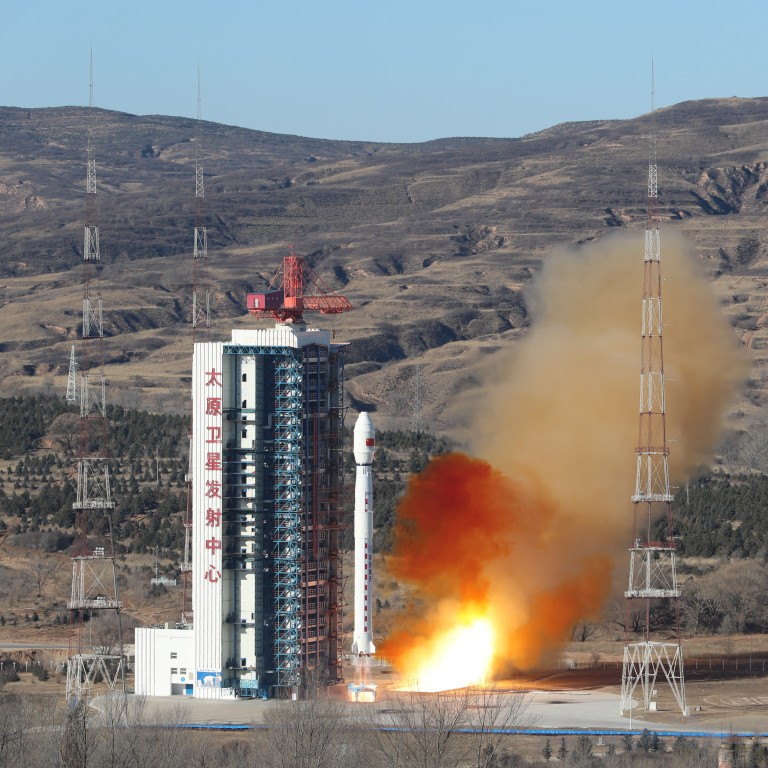
China sends observation satellite into orbit to look for resources on Earth
- It was carried by a Long March 4C rocket and is the latest in a record year of Chinese space launches
- A smaller satellite was also launched and will be used by a Beijing middle school to teach geography and science
Named Ziyuan-1 02E, the satellite was launched by a Long March 4C carrier rocket from the Taiyuan launch site in Shanxi province at about 12pm.
The satellite has a high-resolution near-infrared camera, a hyperspectral imager and a long-wave infrared camera, according to the official China News Service.
With a designed lifespan of eight years, the remote-sensing satellite – whose name means “resource” in Chinese – will be used to obtain high-resolution images for mineral resource exploration, geological disaster warning, and water quality monitoring. It could also be used to aid economic and social development planning, the report said.
A second, smaller satellite was also sent into orbit on the Long March rocket and will be used by a Beijing middle school to teach geography and science.

Sunday’s satellite launch was China’s 53rd orbital launch this year – surpassing its previous record of 39 in both 2018 and 2020. Two more satellite launches are expected before the end of 2021, which will take the total number of satellites sent into orbit this year to 104, according to Chinese media reports.
In a CCTV report on Saturday looking back at the country’s space flight activities this year, He Yufan, an officer with the Xian Satellite Monitor and Control Centre, noted the record number of space launches. He also told the state broadcaster that China would protect the country’s space assets in the future, without elaborating.
Speaking in the same report, Geng Yan, director of deep space exploration at the Lunar Exploration and Space Programme Centre under the China National Space Administration, said the country would continue to push the limits of space exploration.
China aims to finish building the space station next year, with two more cargo missions and another two crewed missions planned for 2022 to make it fully functional. By then, the Tiangong will be about a quarter of the size of the International Space Station, which was built by a coalition of 16 countries.

